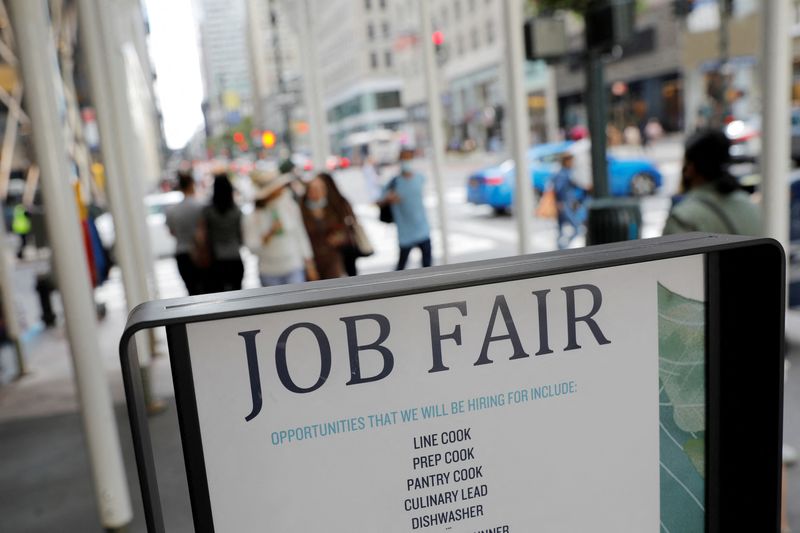US economy likely added jobs at a moderate pace in September
By Lucia Mutikani
WASHINGTON (Reuters) -U.S. job growth likely picked up moderately in September, while the unemployment rate held steady near a four-year high of 4.3%, consistent with sluggish labor market conditions that economists and policymakers have blamed on low supply and demand for workers.
Though the Labor Department’s closely watched employment report on Thursday would be backward-looking, it would confirm the significant loss of momentum in the labor market this year, marked by sharp downward revisions to nonfarm payroll counts.
The report was delayed by the 43-day shutdown of the government. The longest shutdown in history has forced the Bureau of Labor Statistics, which produces the employment report, to cancel the release of October’s report as no data was collected for the household survey to calculate the unemployment rate for that month.
October nonfarm payrolls will instead be combined with November’s employment report now due on December 16, the BLS said. Heading into the economic data blackout, the BLS had estimated that about 911,000 fewer jobs were created in the 12 months through March than previously reported.
“The labor market is clearly slowing, the assumption is that the trend is going to continue,” said Sung Won Sohn, a finance and economics professor at Loyola Marymount University. “We’re going to be scratching the bottom for a while, but I don’t think we are going into recession.”
Nonfarm payrolls likely increased by 50,000 jobs in September, a Reuters survey showed, which would be more than double the 22,000 positions added in August. Economists argued that August’s payrolls count was held back by a seasonal quirk and expected an upward revision in line with prior-year trends.
A reduction in immigration that started during the final year of former President Joe Biden’s term and accelerated under President Donald Trump’s administration has depleted labor supply. Economists estimate the economy now only needs to create between 30,000 and 50,000 jobs per month to keep up with growth in the working-age population, down from about 150,000 in 2024.
While the unemployment rate increased in August, it had mostly bounced between 4.1% and 4.2% this year.
“This strongly suggests that the sagging pace of job growth is mostly, though not entirely, reflecting the shift in labor supply and that the labor market broadly has slackened slightly but not to a substantial degree,” said Stephen Stanley, chief U.S. economist at Santander U.S. Capital Markets.



Leave a Comment
Your email address will not be published. Required fields are marked *